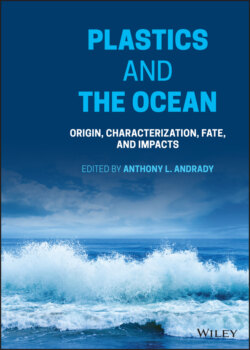Читать книгу Plastics and the Ocean - Группа авторов - Страница 43
2.2.4 Heat Stabilizers
ОглавлениеHeat stabilizers are added to plastics to protect the material from heat during processing and using the product. The most common application of heat stabilizers is in medical grade PVC where it is used at a concentration of 10–15% to protect the polymer during autoclaving (Sastri 2013). Due to the labile chlorine group, PVC is particularly susceptible to heat. Heat stabilizers work by trapping the hydrogen chloride (HCl) that is generated when PVC thermally degrades. They are also used in recycled materials, where they play the double role of inhibiting degradation and re‐stabilizing post‐use plastic waste (Ambrogi et al. 2017). Heat stabilizers are typically either metallic salts, organometallic compounds or nonmetallic organic stabilizers. Metallic salt heat stabilizers used in PVC, polystyrene (PS), and PE are commonly based on barium, cadmium, lead, or zinc and often used together to obtain a synergistic effect. Organometallic heat stabilizers are typically tin based.
